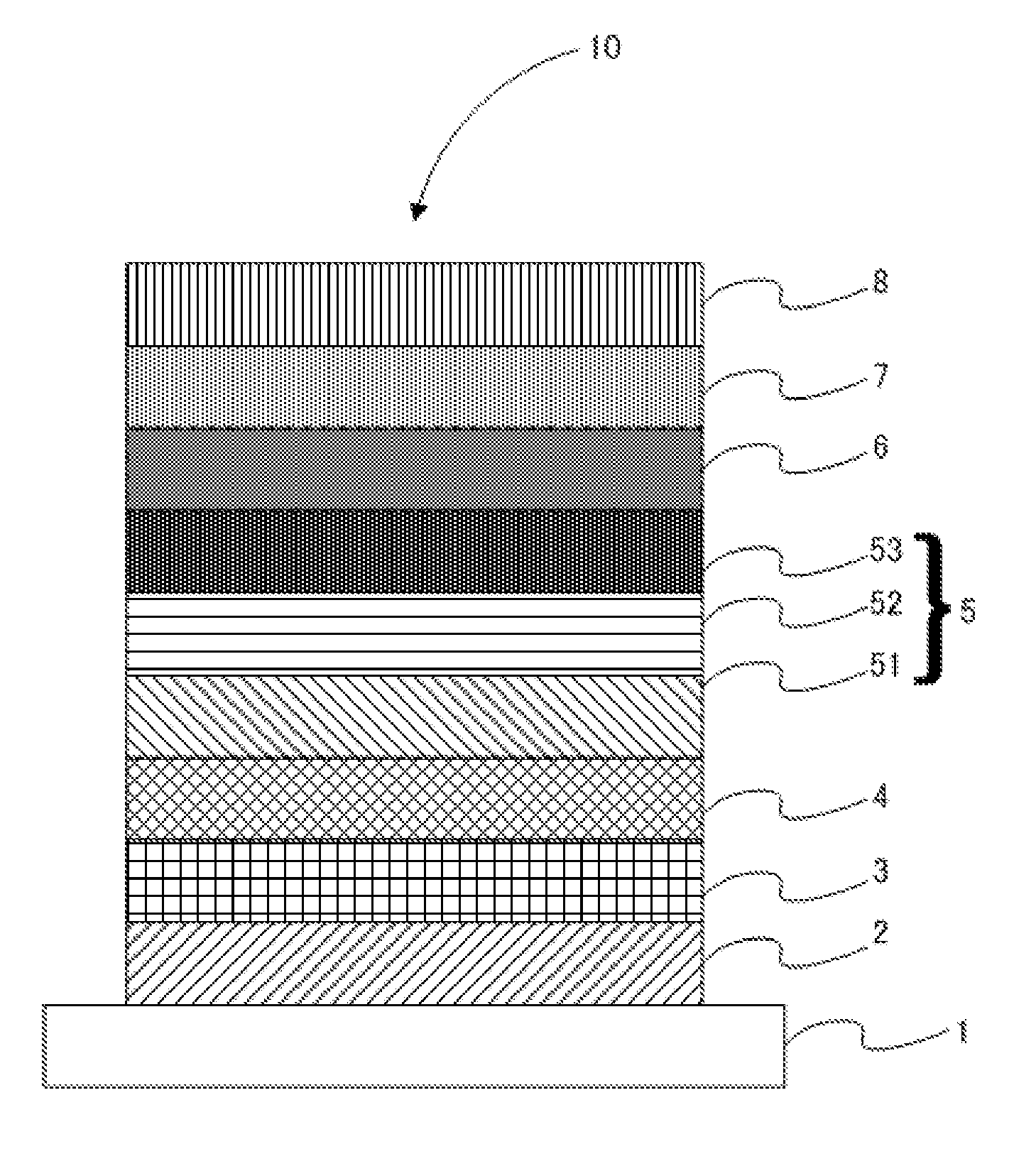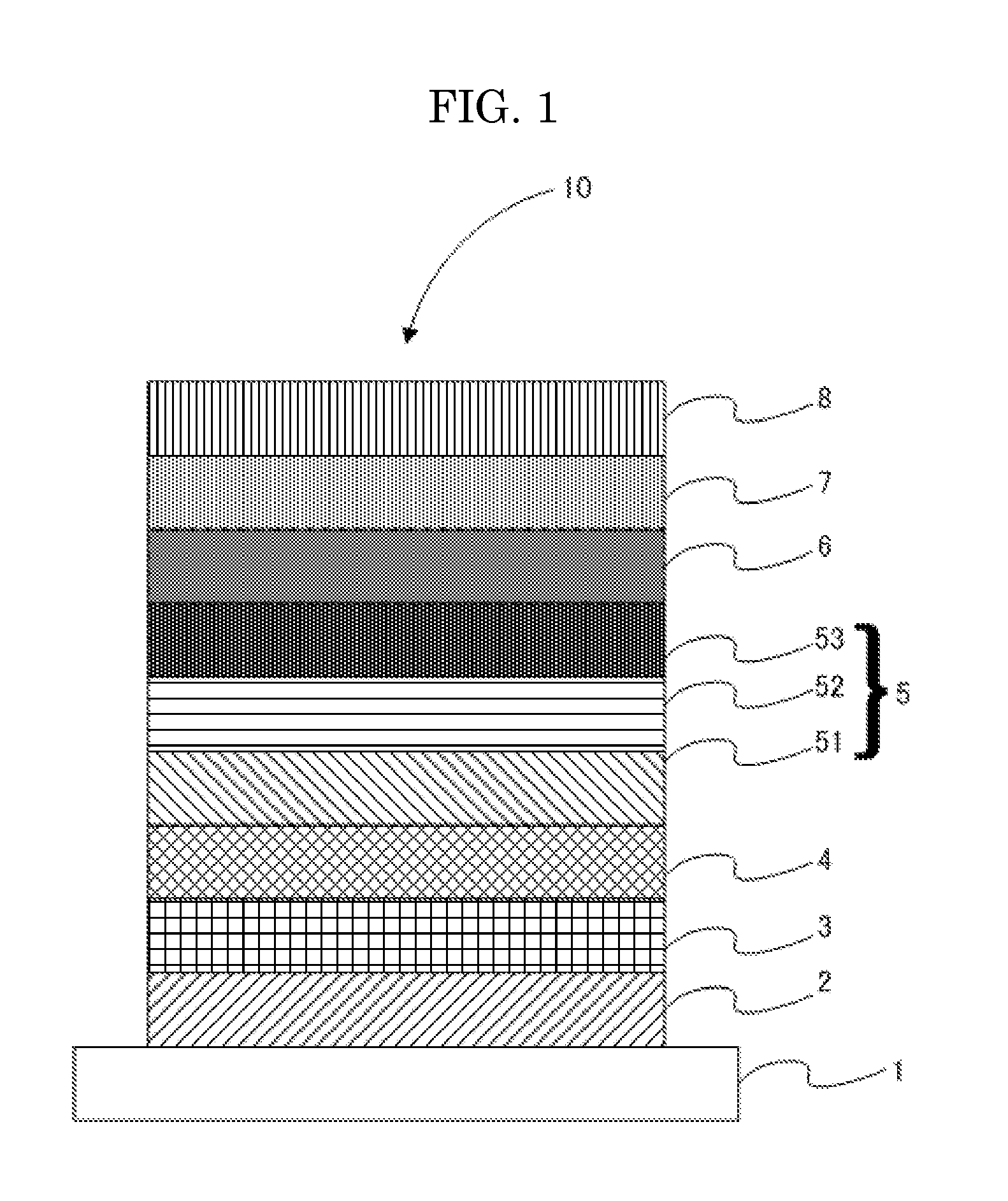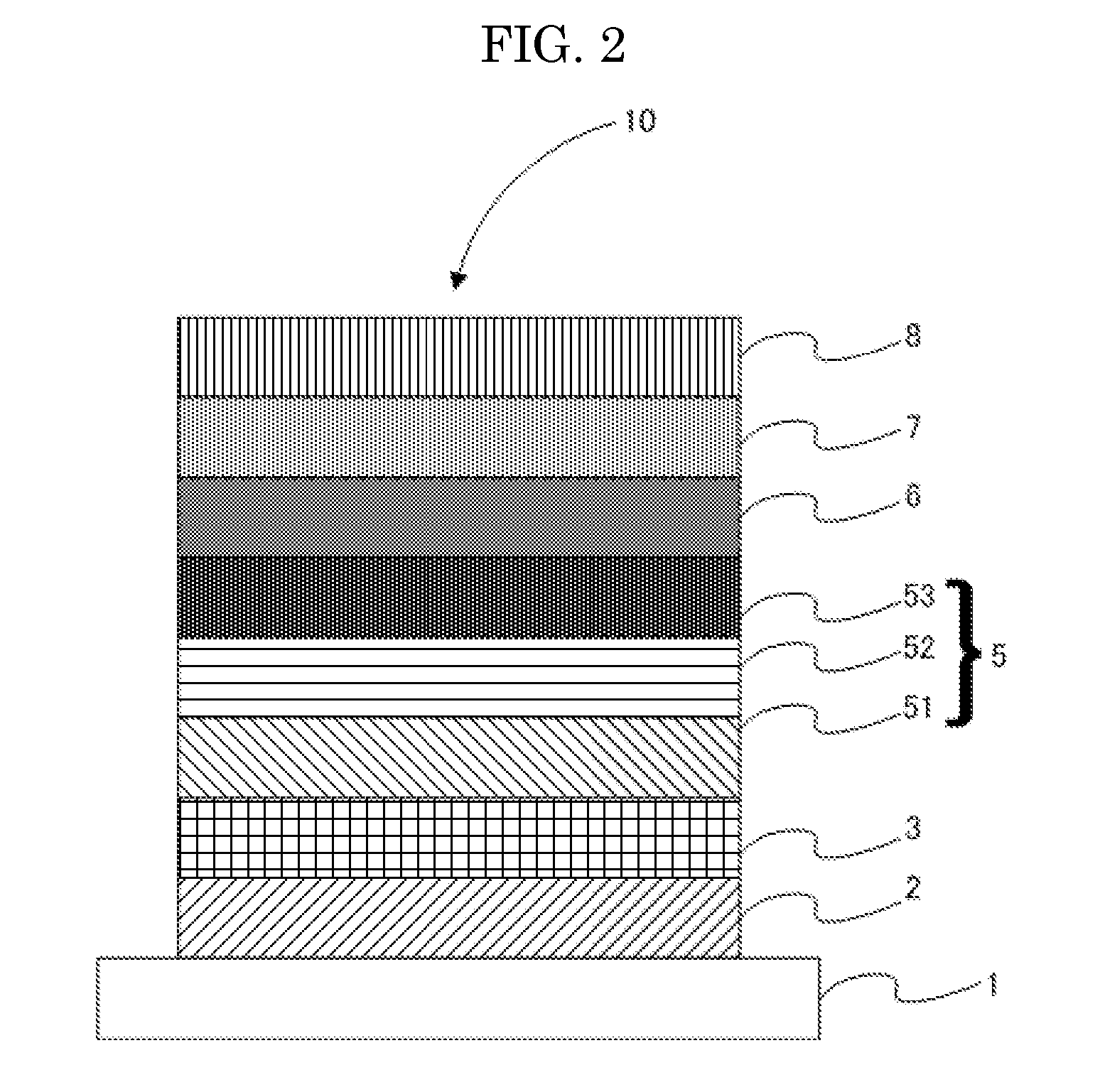Organic electric field light-emitting element
a technology of organic electric field and light-emitting element, which is applied in the direction of thermoelectric devices, discharge tube luminescnet screens, organic semiconductor devices, etc., can solve the problems of large deviation in chromaticity of emitted light, insufficient improvement of permanence and emission efficiency of elements, and inability to achieve sufficient improvement of permanence and emission efficiency, reducing chromaticity deviation, and minimizing the effect of change in emission location
- Summary
- Abstract
- Description
- Claims
- Application Information
AI Technical Summary
Benefits of technology
Problems solved by technology
Method used
Image
Examples
example 1
[0201]After placing a glass substrate having a thickness of 0.5 mm and a side of 2.5 cm in a wash container and washing in 2-propanol by ultrasonic cleaning, the glass substrate was subjected to UV-ozone treatment for 30 minutes. On this glass substrate, the following layers were deposited by vacuum deposition. Note that, in Examples and Comparative Examples below, the deposition rate was 0.2 nm / sec, unless otherwise stated. The deposition rate was measured by means of a crystal oscillator. Moreover, thicknesses of the following layers were measured by means of a crystal oscillator.
[0202]At first, as an anode, indium tin oxide (ITO) was provided on the glass substrate by sputtering to have a thickness of 70 nm.
[0203]Then, as a hole injection layer, the compound expressed by the following structural formula (Ir complex G-1) was deposited on the anode (ITO) to have a thickness of 10 nm.
[0204]
[0205]On the hole injection layer, a first organic layer (serving as a hole transporting layer...
example 2
[0221]An organic electric field light-emitting element of Example 2 was prepared in the same manner as in Example 1, provided that the first organic layer was changed to contain 84% by mass of Compound 1, 15% by mass of Ir complex G-1, and 1% by mass of Pt complex G-1 as the electron-trapping material, relative to the mass of the first organic layer.
[0222]The prepared organic electric field light-emitting element was evaluated in terms of its driving voltage, external quantum efficiency, permanence, chromaticity change (Δ chromaticity), triplet level (T1) of the hole-blocking material, and triplet level (T1) of the hole-transporting phosphorescent material in the same manner as in Example 1.
example 3
[0223]An organic electric field light-emitting element of Example 3 was prepared in the same manner as in Example 2, provided that in the first organic layer the amount of Compound 1, the amount of Ir complex G-1 and the amount of Pt complex G-1 were respectively changed to 82% by mass, 15% by mass, and 3% by mass relative to the mass of the first organic layer, and in the second organic layer the amount of Compound 1, the amount of Ir complex G-1 and the amount of Pt complex G-1 were respectively changed to 82% by mass, 15% by mass, and 3% by mass relative to the mass of the second organic layer.
[0224]The prepared organic electric field light-emitting element was evaluated in terms of its driving voltage, external quantum efficiency, permanence, chromaticity change (Δ chromaticity), triplet level (T1) of the hole-blocking material, and triplet level (T1) of the hole-transporting phosphorescent, material in the same manner as in Example 1.
PUM
 Login to View More
Login to View More Abstract
Description
Claims
Application Information
 Login to View More
Login to View More - R&D
- Intellectual Property
- Life Sciences
- Materials
- Tech Scout
- Unparalleled Data Quality
- Higher Quality Content
- 60% Fewer Hallucinations
Browse by: Latest US Patents, China's latest patents, Technical Efficacy Thesaurus, Application Domain, Technology Topic, Popular Technical Reports.
© 2025 PatSnap. All rights reserved.Legal|Privacy policy|Modern Slavery Act Transparency Statement|Sitemap|About US| Contact US: help@patsnap.com



